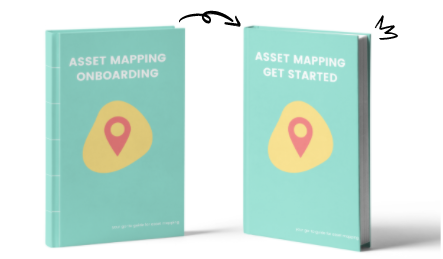Service Design
Empowering Local Community Narratives by creating Asset Mapping Tools
UX Research + Design | Community | 4 months
PURPOSE
To address the identified gap in community asset mapping, we aim to equip communities with a suite of tools designed to foster meaningful dialogues.
We found was a gap in the asset mapping process where there is room for communities to have structured conversations and develop a shared language.
Our research indicated a distinct lack of existing tools that support these objectives, highlighting an opportunity to create resources that bridge this divide. By implementing our tools, organizations will be better positioned to navigate the complexities of community asset mapping, ultimately leading to more effective and collaborative outcomes.
RESEARCH
Taking a Human-Centered Design approach to problem solving by focusing on the user's needs, by leading with the question, “how might we rethink asset mapping as an opportunity to create a shared artifact that can be broadly utilized by an entire community?
Focus on People
We put our user's needs first and always think of who we're designing for.
Identify the Right Problem
Through inquiry and analysis we identify our user's pain points before designing a solution.
Think Big Picture
We think about the big picture to design a good user experience at all touch points.
21
Existing mapping platforms analyzed to understand key functionalities
COMPETITIVE ANALYSIS
20
Articles on asset mapping and Asset-Based Community Development
LITERATURE REVIEW
3
In-person interviews with Chicago Peace Fellows
INTERVIEWS
Key findings from research showed Asset Mapping…
Is an ongoing collaborative process
Does not always involve a map
Relies on trust
Is a way to build relationships
Requires a shared language
Is driven by conversations
Organizations using asset mapping do not always use technology
DESIGN
Our asset mapping toolkit consisted of five tools to aid community conversations and engagement. Originally we planned to design a digital platform, but as we interviewed the Chicago Peace Fellows, we found many of the communities who would be utilizing our toolkit did not have stable access to technology or the internet.
This toolkit helps community organizations identify and leverage community assets, including the identification of any barriers to accessing those assets, such as language or what constitutes as an asset. Additionally, the tools inside this kit will help facilitate conversations, develop a common language, and engage with assets once they’ve been identified.
Asset Mapping Toolkit Contents
-
The objective of the onboarding guide is to get the participants acquainted with the tools inside of the toolkit and provide overview of the asset mapping process.The onboarding booklet includes instructions on:
Creating a vision statement
Defining meeting objectives
Defining meeting roles
How to use each tool inside the toolkit
-
The first objective of this map is to provide information on how organizations can obtain a map to start their asset mapping process.
The second part of the map provides follow-up questions that organizations should consider once they’ve identified an asset.
-
The objective of the conversation cards is to help organization leaders have and facilitate meaningful conversations around their organization’s approach to asset mapping. The cards build upon each other in the order of:
Ice Breakers
Know Your Community
Community Resources
Resources in Actions
-
The objective of this activity is to allow organization leaders to develop a shared understanding of key terms associated with the asset mapping process.
Included Terms
Community Wealth
Community Leadership
Community Values
Create Your Own
-
The objective of the resource list is to provide organization leaders with information to drive community action. It can be of value during conversations around assets and asset mapping by pointing to existing resources organizations achieve their goals.
TESTING + EVALUATION
Our asset mapping toolkit consisted of five tools to aid community conversations and engagement. Originally we planned to design a digital platform, but as we interviewed the Chicago Peace Fellows, we found many of the communities who would be utilizing our toolkit did not have stable access to technology or the internet.
Users suggested altering questions to capture people and their talents; not just programs they attend.
“Change into more people-centered questions rather than just place. Use everyday language!”
“I think the term onboarding might be confusing to people. Instead, try something like, ‘here’s a quick overview,’ to allow something more accessible than the term onboarding.”
“Update the image to people, indicating the know your community section is for both people and places.”
FINAL THOUGHTS












